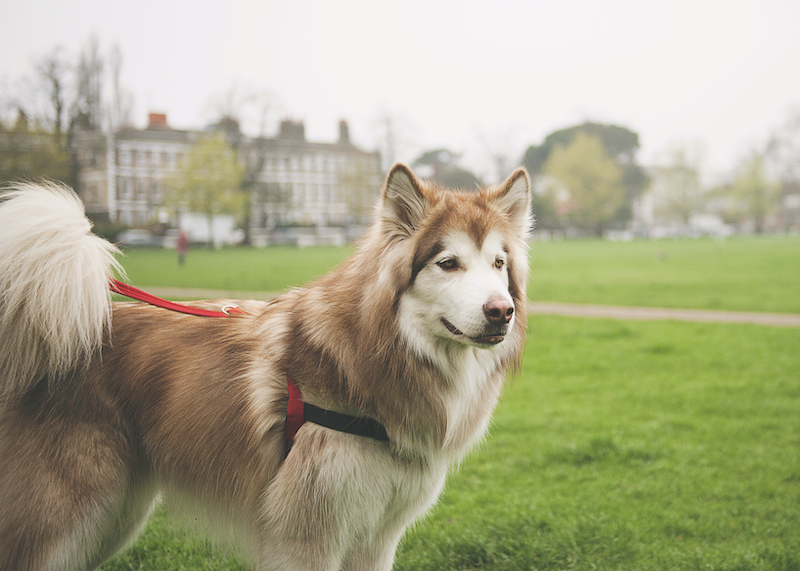One of the most extraordinary things about the domestic dog is that they show the greatest range of shapes and sizes than any other mammal on the planet – or indeed that has ever lived! Just think about that for a moment and it seems even more amazing. How can a Chihuahua and a Great Dane even be the same species?!
The reasons for all of these shapes and sizes depend on lots of factors and go right back to the history of domestication but at the point when dogs began to live alongside humans, they were bred not on how they looked but on their useful working ability.
Over the centuries we have perfected these working talents – and every single one of the 221 breeds recognised by the UK Kennel Club were originally created to do a certain job in a certain environment.
That job might have been herding, guarding, vermin killing, hunting or being a constant companion – and much more besides – but each one was purpose-bred, generation to generation, to be the very best they could be at that job.
Few of these jobs still exist, and most of our dogs no longer get to do the job they have been developed, sometimes over centuries, to be specialists at – but that doesn’t mean that the instinct isn’t still there, buried deep in our dogs’ genetic make-up.
An understanding of this is vital if we want to live in harmony with our dogs – and also when we choose the dogs that are going to share our lives. When anyone starts their search for their perfect dog, the very first thing to think about should be “what were they originally bred to do?”.
This will give you invaluable clues to how much exercise they will need, what kind of character they will have, what they will enjoy doing, what their weaknesses or foibles might be, how much outward affection they will show, and how you can interact, play and build a strong bond with them.
By asking that one question alone, you can prevent many behaviour problems, be able to predict any potential issues – and better still, know how to interact with your dog in a way that will ensure you have the very best relationship and life together.
First of all, were they designed as working dogs? Many of the gundog breeds that are so popular are chosen because they are great family dogs – as they love everyone! They are perfect in homes with children, other dogs, cats, visitors… and are accepting of just about everything. But… and this is a big but that people often totally overlook… they were designed to work with their owner all day every day, no matter the weather. In other words, in terms of exercise, they are high maintenance and so require a family who are active and outdoorsy. Without this they are likely to get bored, frustrated, depressed – and fat! Thankfully they are great fun to exercise as they love playing retrieve games, will join in with any activity, and enjoy training as they have a high willingness to please their humans.
It’s not just the gundog breeds that were developed to work all day every day however. Herding dogs, sled dogs, hounds and many terriers are equally workaholics but once again by looking at how they originally did their jobs, and in what conditions, will give owners some great clues as to how much exercise they need, what kind of exercise, what kind of games they will enjoy and how to keep them happy and content.
Other breeds were developed to work at a distance from their owners and on their own initiative – some using their noses while others used their keen eyesight for hunting. These are the dogs who will never hang on your every word, will be far more interested in interesting sniffs or sprinting squirrels – and might well look at recall as a multiple-choice question!
When it comes to behaviour problems, by being a breed detective, many of these are easy to predict. Those dogs bred to be constant companions are more likely to develop separation issues – as are dogs who would have worked constantly by their owner’s side, while those that were bred to react quickly to situations, can be reactive and find stimulating environments highly stressful.
There is far more to this – and I’ll be writing in more detail in later blogs – but the important thing to remember is that dogs don’t just ‘want’ to do the things they were created to do, they ‘need’ to. That deep-seated working ability is how humans developed this huge variety of breeds and it is what your dog needs to stay healthy and happy. So you need to make sure you can provide an outlet for that working ability – whatever it might be.
You are both going to be far happier if instead of trying to turn them into your idea of what a perfect dog should be (usually the image is the obedience champion Border Collie – or Lassie!), you give them the chance to explore their own hard-wired talents and skills, enjoy their unique canine expertise and character, make sure they are fulfilled, and help them be the very best their individual breed can possibly be.
In other words, recognise and love the dog you are with!

